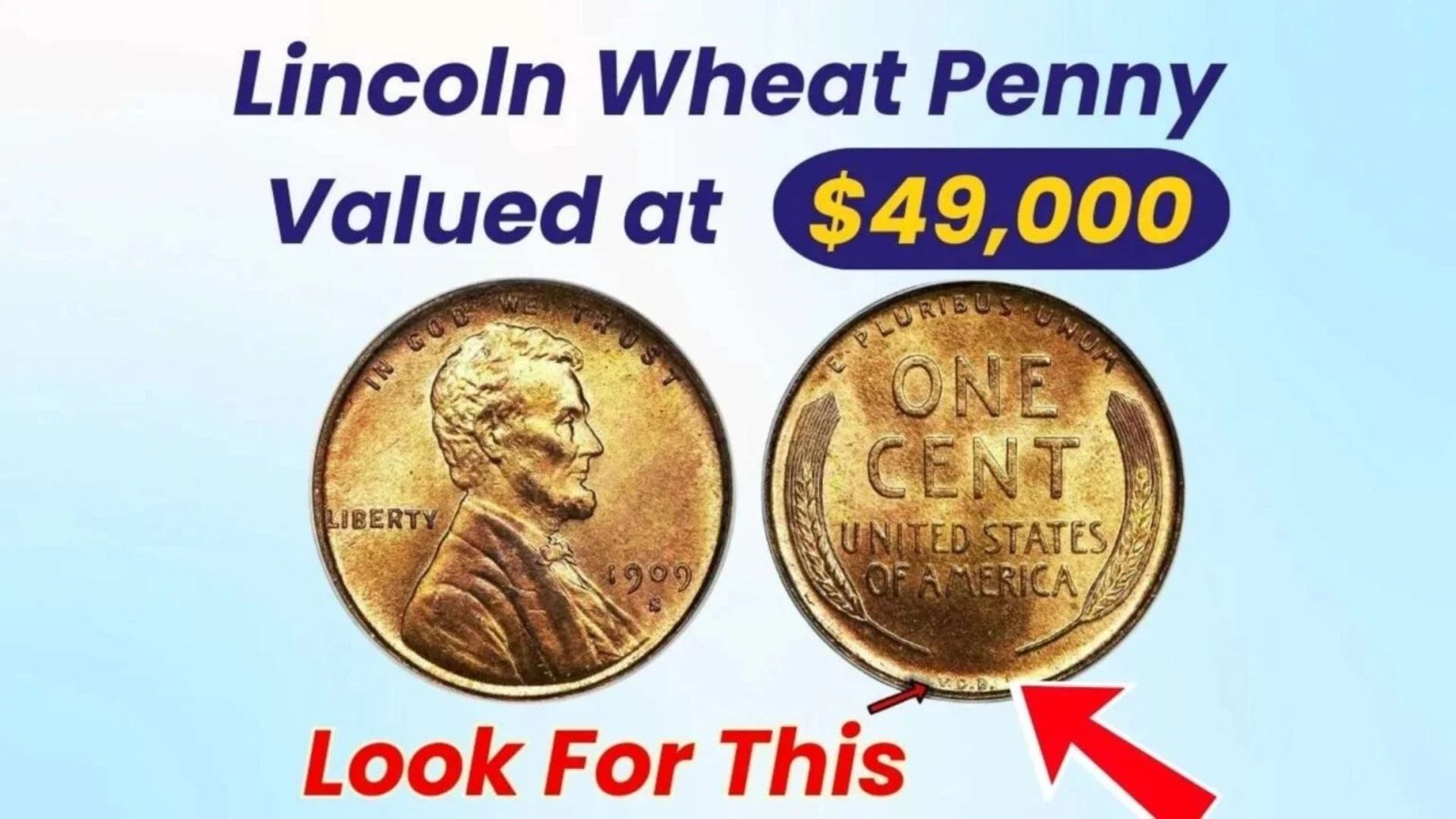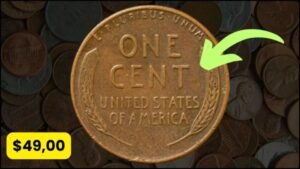Imagine finding a penny worth $49,000 in your spare change! The Lincoln Wheat Penny, a coin from 1909 to 1958, holds secrets that could turn pocket lint into treasure. Some rare versions are still in circulation, waiting to be discovered. Read on to learn about these valuable coins, their history, and how to spot one!
What Is the Lincoln Wheat Penny?
The Lincoln Wheat Penny is a U.S. one-cent coin minted from 1909 to 1958. It features Abraham Lincoln’s profile on the front and two wheat stalks on the back, symbolizing prosperity. While most are worth just a cent, rare versions can fetch thousands due to errors, low mintages, or unique features.
A Brief History of the Lincoln Wheat Penny
In 1909, the U.S. Mint honored Lincoln’s 100th birthday with a new penny design by Victor D. Brenner. It was the first U.S. coin to feature a real person, replacing Lady Liberty. The wheat stalks on the reverse gave it the “Wheat Penny” nickname. Early coins, like the 1909-S VDB, sparked controversy over Brenner’s initials, leading to their removal and creating instant rarities. During World War II, copper shortages led to steel pennies in 1943, with rare copper errors becoming legendary.
Why Is It So Valuable Today?
Rare Lincoln Wheat Pennies are prized for their scarcity, historical significance, and collector demand. Errors like the 1943 copper penny or the 1955 doubled die can fetch up to $49,000 or more at auction. Low-mintage coins, like the 1931-S, are also highly sought after. Their value rises as fewer high-quality examples remain in circulation, making them a thrilling find for collectors.
How to Find and Identify Rare Wheat Pennies
You could stumble upon a valuable penny in coin rolls, old jars, or inherited collections! Here’s how to spot a rare one:
- Check the Date and Mintmark: Look for “S” (San Francisco) or “D” (Denver) under the date. No mintmark means Philadelphia.
- Inspect for Errors: Doubled text, missing mintmarks, or odd metal (like 1943 copper) are key.
- Test 1943 Pennies: Use a magnet. Steel sticks; copper doesn’t.
- Examine Condition: Uncirculated coins with original luster are worth more.
Consult a grading service like PCGS or NGC to verify authenticity and value. Never clean coins—it lowers their worth
Notable Rare Lincoln Wheat Pennies
Here’s a table of some of the most valuable Lincoln Wheat Pennies:
| Year | Key Feature/Error | Estimated Value (USD) | Notes |
|---|---|---|---|
| 1943 | Bronze/Copper Planchet | $200,000–$1.7M+ | Rare wartime error, <20 known |
| 1909-S VDB | Low Mintage, VDB Initials | $700–$2,000+ | First-year coin, 484,000 minted |
| 1955 | Doubled Die Obverse | $1,000–$49,000+ | Dramatic doubling on text |
| 1922 | No “D” Mintmark | $500–$57,500+ | Die error, Denver mint |
| 1914-D | Low Mintage | $200–$15,000+ | Only 1.2M minted, heavily circulated |
These coins are numismatic treasures, with values varying by condition and market demand.
Expert Tips for Collectors
- Use a Magnifier: A loupe or digital microscope reveals tiny errors like doubled dies.
- Join Coin Clubs: Connect with local or online numismatic groups for advice and trading.
- Store Properly: Use acid-free holders to protect coins from damage.
- Research Values: Check recent auction results on sites like Heritage Auctions for accurate pricing.
- Authenticate Errors: Always verify rare finds with professional grading services to avoid fakes.
FAQs About Lincoln Wheat Pennies
Q: How rare is the 1943 copper penny?
A: Extremely rare—fewer than 20 exist. They’re worth over $1 million in top condition.
Q: Can I find valuable pennies in circulation?
A: Yes, but it’s rare. Check old coin rolls, estate sales, or family collections.
Q: What’s the best way to check a penny’s value?
A: Use a magnet for 1943 coins and consult grading services like PCGS or NGC.
Q: Why are some pennies red, red-brown, or brown?
A: Red pennies retain 95%+ original luster, red-brown are mixed, and brown are fully toned. Red coins fetch the highest prices.
Comparison of Common vs. Rare Wheat Pennies
| Feature | Common Wheat Penny | Rare Wheat Penny |
|---|---|---|
| Value | $0.03–$0.05 | $500–$1.7M+ |
| Mintage | Millions–Billions | <1M (e.g., 1909-S VDB) |
| Condition | Circulated, worn | Uncirculated, lustrous |
| Key Examples | 1940s–1950s | 1943 Bronze, 1955 DDO |
Conclusion
The Lincoln Wheat Penny is more than pocket change—it’s a piece of American history with the potential for life-changing value. From the rare 1943 copper penny to the iconic 1909-S VDB, these coins captivate collectors worldwide. Start checking your change, old jars, or coin rolls—you might uncover a $49,000 treasure! Share this post, join a coin club, or dive deeper into numismatics to keep the hunt alive!




